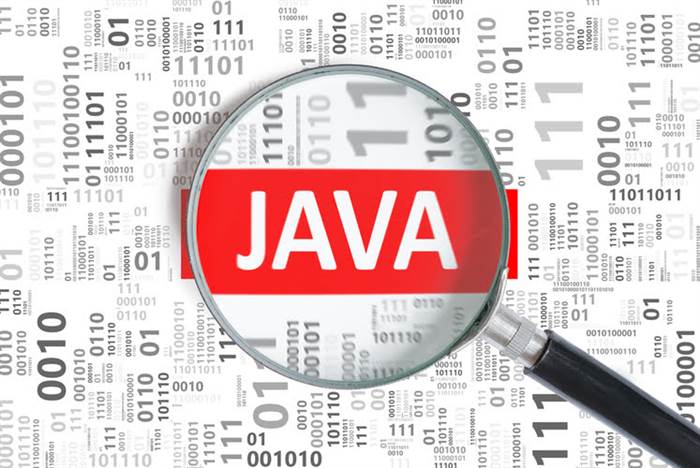test test
ماه: مارس 2024
Shareholders Equity Formula + Calculator
Shareholders’ equity includes preferred stock, common stock, retained earnings, and accumulated other comprehensive income. Current assets are those that can be converted to cash within a year, such as accounts receivable and inventory. Long-term assets are those that cannot be converted to cash or consumed within a year, such as real estate properties, manufacturing plants, equipment, https://www.kelleysbookkeeping.com/ and intangible items like patents. As discussed above, it can also be calculated by adding share capital to retained earnings. For starters, shareholder equity tells you the total return on investment versus the amount invested by equity investors. If a small business owner is only concerned with money coming in and going out, they may overlook the statement of stockholders’ equity.
Retained Earnings
Mr. Arora is an experienced private equity investment professional, with experience working across multiple markets. Rohan has a focus in particular on consumer and business services transactions time period assumption and operational growth. Rohan has also worked at Evercore, where he also spent time in private equity advisory. However, the effect of dividends varies based on the type of dividends issued.
Get Your Business a One-Year Sam’s Club Membership for Just $14
Paid-in capital can rise when a company issues new shares or sells treasury shares at a price higher than their par value, increasing paid-in capital and stockholders’ equity. This is the other formula, where share capital, retained earnings, and treasury stock are needed to formulate owner’s equity. A balance sheet can’t predict changes in the value of a company’s assets or changes to its liabilities that haven’t occurred yet.
Role of Stockholders’ Equity in Decision-Making
It is the difference between shares offered for subscription and outstanding shares of a company. In most cases, retained earnings are the largest component of stockholders’ equity. This is especially true when dealing with companies that have been in business for many years. During a liquidation process, the value of physical assets is reduced and there are other extraordinary conditions that make the two numbers incompatible. Retained earnings should not be confused with cash or other liquid assets. The retained earnings are used primarily for the expenses of doing business and for the expansion of the business.
Common Stock and Additional Paid-In Capital (APIC)
Current liabilities are debts that are due for repayment within one year, such as accounts payable and taxes payable. Long-term liabilities are obligations that are due for repayment in periods beyond one year, including bonds payable, leases, and pension obligations. You can use several years of retained earnings for assets, expenses or other purposes to grow a business. Positive shareholders’ equity means a company has enough assets to cover its debts or liabilities. Negative shareholders’ equity, on the other hand, means that the liabilities of a firm exceed its total asset value. A statement of shareholder equity is a section of the balance sheet that reflects the changes in the value of the business to shareholders from the beginning to the end of an accounting period.
To calculate, you first need to find out your target company’s total assets and total liabilities. Total assets includes all long-term and current assets such as plant, machinery, property, inventory, cash on hand and receivables owned by the company. Total assets must equal the total liabilities and stockholders equity in order for the balance sheet to balance. Shareholders equity is also known as owners’ equity, net worth, owner’s capital and simply equity. Many investors look at companies with negative shareholder equity as risky investments.
Increases or decreases on either side could shift the needle substantially when it comes to the direction in which stockholders’ equity moves. Return on equity is a measure that analysts https://www.kelleysbookkeeping.com/accumulated-depreciation-and-depreciation-expense/ use to determine how effectively a company uses equity to generate a profit. It is obtained by taking the net income of the business divided by the shareholders’ equity.
- Liability represents the total debt of the company and owner’s capital represents shareholders’ ownership.
- As a result, financial experts consider a firm’s retained earnings and its owner’s equity when analyzing its financial soundness.
- Investors, lenders and analysts use stockholders’ equity to inform their investment and lending decisions regarding a company.
- Net income is the total revenue minus expenses and taxes that a company generates during a specific period.
- Stockholders’ equity can be a key indicator of a company’s stability, growth potential and ability to attract investments.
Owner’s equity may rise as a result of selling stock, increasing revenues, cutting operational expenditures, etc. The benefit is that there are no interest payments or requirements to return the investment. Instead, the current market value of each share must be considered, which is usually more than the nominal value.
More technically, it’s the value of an asset, like property, minus its liabilities, like debt. Shareholder equity influences the return generated concerning the total amount invested by equity investors. This is because years of retained earnings could be used for expenses or any asset to help the business grow. Bonds are contractual liabilities with guaranteed annual payments unless the issuer defaults, whereas dividend payments from stock ownership are discretionary and not fixed. We can apply this knowledge to our personal investment decisions by keeping various debt and equity instruments in mind. Although the level of risk influences many investment decisions we are willing to take, we cannot ignore all the critical components discussed above.
What Is Stockholders Equity and How Is It Calculated?
If a company doesn’t wish to hang on to the shares for future financing, it can choose to retire the shares. These earnings, reported as part of the income statement, accumulate and grow larger over time. At some point, accumulated retained earnings may exceed the amount of contributed equity capital and can eventually grow to be the main source of stockholders’ equity.
Stockholders’ Equity: A Key Indicator of Company’s Value
Retained earnings are reinvested in the business, not distributed as dividends, allowing for long-term returns. Investors and analysts look to several different ratios to determine the financial company. This shows how well management uses the equity from company investors to earn a profit. Part of the ROE ratio is the stockholders’ equity, https://www.kelleysbookkeeping.com/accounting-cycle/ which is the total amount of a company’s total assets and liabilities that appear on its balance sheet. When calculating the shareholders’ equity, all the information needed is available on the balance sheet – on the assets and liabilities side. The total assets value is calculated by finding the sum of the current and non-current assets.
Everything You Need To Master Valuation Modeling
- The equity capital/stockholders’ equity can also be viewed as a company’s net assets.
- Long-term liabilities are any debts or other obligations due for repayment later than one year in advance, such as leases, bonds payable and pension obligations.
- Total assets includes all long-term and current assets such as plant, machinery, property, inventory, cash on hand and receivables owned by the company.
- Long-term liabilities are obligations that are due for repayment over periods longer than one year.
- Mr. Arora is an experienced private equity investment professional, with experience working across multiple markets.
Stock dividends have a different impact on shareholder equity than cash payments. The equity capital/stockholders’ equity of a firm can also be considered as its net assets. However, looks may be deceiving, and learn basic accounting in this free online cima raising a company’s share capital does not always make it a safer option in the eyes of experienced investors. As a result, some businesses will seek to expand their share capital as an alternative to a loan.
What Are the Components of Shareholder Equity?
However, buying back these shares can reduce a company’s paid-in capital and overall equity, while selling them can increase both. This is one of the formulas that can be used, along with total assets and liabilities, to calculate owner’s equity. Shareholder equity comprises original paid-up capital, preferred/common shares, and earnings retained after paying dividends and share buybacks. Shareholders’ equity, known as owner’s equity, is the difference between a company’s assets and liabilities. A firm reports the components and total owner’s equity in quarterly or yearly filings. The owner’s equity reflects a company’s economic stability and provides information about its financial performance.
Current liability comprises debts that require repayment within one year, while long-term liabilities are liabilities whose repayment is due beyond one year. Looking at the same period one year earlier, we can see that the year-over-year (YOY) change in equity was an increase of $9.5 billion. The balance sheet shows this decrease is due to a decrease in assets, but a larger decrease in liabilities. Investors contribute their share of paid-in capital as stockholders, which is the basic source of total stockholders’ equity.
This growth can be reduced if part of earnings is given out as a dividend. Retained earnings are the accumulated profits that remain with the firm after dividends are paid to shareholders. A firm can still have retained earnings even if it incurs a net loss in a fiscal year; however, the retained earnings balance would be reduced by the amount of the loss. Positive shareholder equity means the company has enough assets to cover its liabilities. Negative shareholder equity means that the company’s liabilities exceed its assets. Let’s assume that ABC Company has total assets of $2.6 million and total liabilities of $920,000.
In terms of its application, stockholders’ equity can be used to generate a financial snapshot of a company at any given point in time. Specifically, this metric can be used to evaluate the likelihood of receiving a payment should the company have to liquidate. The above formula is known as the basic accounting equation, and it is relatively easy to use. Take the sum of all assets in the balance sheet and deduct the value of all liabilities. Total assets are the total of current assets, such as marketable securities and prepayments, and long-term assets, such as machinery and fixtures.
It aids in evaluating the company’s financial ratios, fund sources and uses and overall financial progress. An example of a stockholders’ equity is if a company has 300 million in assets and 200 million in liabilities, then the total stockholder’s equity is 100 million. Microsoft purchased Nuance Communications https://www.kelleysbookkeeping.com/ in 2022 for $19.7 billion, acquiring their conversational AI and cloud-based clinical intelligence services for healthcare providers. Microsoft paid $56 per share in an all-cash transaction, partly because of Nuance’s strong balance sheet with a stockholders’ equity of $1.6 billion as of Sept. 30, 2021.
In exchange for that capital, investors claim an equity stake in the company. Retained earnings are the part of a company’s profits that it keeps for reinvestment after dividends and other distributions are paid to investors. For mature companies consistently profitable, the retained earnings line item can contribute the highest percentage of shareholders’ equity. In these types of scenarios, the management team’s decision to add more to its cash reserves causes its cash balance to accumulate. You can calculate stockholders’ equity through book value or market value.
Java Exception Handling Half I Exceptions And Its Varieties
When an exception happens, specialised programming language constructs, interrupt hardware mechanisms or working system interprocess communication services deal with the exception. Like Java, the C++ library has a regular exception class which is the bottom class for all normal exceptions. All objects thrown by the parts of the usual library are derived from this class.
- To understand the impact of an efficient deduction resolution process on recovery rates learn our blog – Mastering Deduction Resolution.
- This opens the door to potential errors, because the AP staff need to manually enter the data into the system.
- In order to ascertain that exception dealing with routines are sufficiently strong, it is essential to current the code with a wide spectrum of invalid or surprising inputs, similar to can be created through software program fault injection and mutation testing (that can also be sometimes known as fuzz testing).
- In this example, a variable is left undefined, so console.log generates an exception.
- Thus a component can make certain that errors from its child parts are caught and handled, and never propagated as a lot as father or mother elements.
An exception handler is code that stipulates what a program will do when an anomalous occasion disrupts the traditional move of that program’s directions. An exception, in a pc context, is an unplanned occasion that occurs while a program is executing and disrupts the circulate of its directions. For example, C++ exception dealing with has a catch all block, which can catch different varieties of exceptions, however Java does not. Likewise, C++ is ready to throw primitives and pointers as exceptions, however Java can only throw objects as exceptions.
Let’s see an example of Java Exception Handling in which we are using a try-catch assertion to deal with the exception. Using exceptions to manage errors has some advantages over conventional error-management methods. Here, what() is a public technique offered by exception class and it has been overridden by all the youngster exception lessons. This is helpful gadget to handle surprising exceptions in a C++ program. Checked Exceptions are exceptions that the JAVA complier requires us to deal with. We need to both declaratively throw the exception up the decision stack, or we have to deal with it ourselves.
Java Regex
An exception that theoretically could be detected by studying the code. To perceive the impression of an effective deduction decision process on recovery charges read our weblog – Mastering Deduction Resolution. The payable amount could be entered incorrectly, or the PO number could be transposed. Exception handling typically results in late funds and affects the company’s ability to barter discounts with other distributors. Common examples embrace wrongly specified pricing, or mismatched PO numbers on invoices.
It consists of key function such as 3-way bill matching, configurable rules, and the power to view invoice exceptions and the associated match fail standards. It presents a comprehensive evaluation over invoices that don’t match mechanically. Invoice queries can be managed via a centralized platform to hunt approvals and clarifications before the bill is re-matched. In order to make sure that meaningful regression evaluation may be conducted all through a software development lifecycle process, any exception dealing with testing should be highly automated, and the test circumstances must be generated in a scientific, repeatable fashion. Several commercially available methods exist that carry out such testing.
Ieee 754 Floating-point Exceptions
One mechanism to transfer management, or raise an exception, is known as a throw; the exception is said to be thrown. In runtime engine environments similar to Java or .NET, there exist tools that attach to the runtime engine and each time that an exception of curiosity happens, they report debugging data that existed in reminiscence on the time the exception was thrown (call stack and heap values). These tools exception handling are referred to as automated exception handling or error interception instruments and provide ‘root-cause’ information for exceptions. All exception and error sorts are subclasses of the category Throwable, which is the base class of the hierarchy. This class is used for exceptional situations that consumer programs should catch.
When an exception is thrown, all objects created inside the enclosing strive block are destroyed before the control is transferred to the catch block. Exceptions in software development are anomalous, surprising circumstances into which a program might enter if an unsupported operation gets executed. Exceptions break the flow of management and may either set off a pre-configured handler or bubble up the stack. Exceptions may be thrown anyplace inside a code block utilizing throw assertion. The operand of the throw assertion determines a type for the exception and could be any expression and the kind of the outcomes of the expression determines the type of exception thrown.

For instance, if a technique may throw an IOException, it should declare this truth explicitly in its technique signature. According to Hanspeter Mössenböck, checked exceptions are much less handy however extra sturdy.[34] Checked exceptions can, at compile time, cut back https://www.globalcloudteam.com/ the incidence of unhandled exceptions surfacing at runtime in a given utility. The catch assertion represents a block of code that is executed when a specific exception is thrown from the strive block. The code to handle the exception is written inside the catch block.
Need For Try-catch Clause(customized Exception Handling)
Another department, Error is utilized by the Java run-time system(JVM) to indicate errors having to do with the run-time setting itself(JRE). Although the strive, throw and catch blocks are all the identical within the Java and C++ programming languages, there are some basic variations in every language. The strive keyword represents a block of code which will throw an exception positioned inside the attempt block.
So, it’s not necessary to specify all uncaught exceptions in a function declaration. However,exception-handling it’s a recommended follow to take action. If an exception is thrown and never caught anyplace, this system terminates abnormally.
When an exception is thrown, the program searches back via the stack of function calls until an exception handler is found. Some languages name for unwinding the stack as this search progresses. That is, if perform f, containing a handler H for exception E, calls perform g, which in turn calls perform h, and an exception E occurs in h, then capabilities h and g could also be terminated, and H in f will deal with E. Alternately, the exception handling mechanisms could not unwind the stack on entry[note 1] to an exception handler, giving the exception handler the choice to restart the computation, resume or unwind. Allowing the computation to resume the place it left off is termed resumption semantics.
the next determine, the runtime system (and, consequently, the program) terminates. This default uncaught exception handler could also be overridden, either globally or per-thread, for instance to offer different logging or end-user reporting of uncaught exceptions, or to restart threads that terminate because of an uncaught exception. For instance, in Java this is carried out for a single thread through Thread.setUncaughtExceptionHandler and globally by way of Thread.setDefaultUncaughtExceptionHandler; in Python this is accomplished by modifying sys.excepthook. In this instance, a variable is left undefined, so console.log generates an exception. The try bracket is used to include the code that encounters the exception, so the application does not crash. But, if an exception occurs, then the error is caught, and the catch block is executed.

In basic, an exception breaks the conventional flow of execution and executes a pre-registered exception handler; the primary points of how that is accomplished depend on whether it is a hardware or software exception and how the software program exception is applied. In C++, exceptions are runtime anomalies or abnormal circumstances that a program encounters throughout its execution. The strategy of handling these exceptions is called exception handling.
The set of potential “somethings” to handle the exception is the ordered listing of strategies that had been referred to as to get to the strategy where the error occurred. The list of strategies is recognized as the decision stack (see the next figure). When an error happens inside a technique, the strategy creates an object and arms it off to the runtime system. The object, known as an exception object, accommodates information about the error, including its type and the state of the program when the error occurred. Creating an exception object and handing it to the runtime system is recognized as throwing an exception.
A Situation The Place Arrayindexoutofboundsexception Happens
In Java, an exception is an occasion that disrupts the normal circulate of the program. The Exception Handling in Java is likely certainly one of the highly effective mechanism to handle the runtime errors in order that the normal circulate of the appliance could be maintained. The following program compiles fantastic, but ideally, the signature of fun() should record the unchecked exceptions. Unlike Java, in C++, all exceptions are unchecked, i.e., the compiler doesn’t verify whether an exception is caught or not (See this for details).
The boolean local variables are initialized to False initially. If send_fast fails, the physique (do clause) will be executed again, causing execution of send_slow. If this execution of send_slow fails, the rescue clause will execute to the tip with no retry (no else clause in the last if), inflicting the routine execution as an entire to fail. It assumes that a routine send_fast is often the better approach to send a message, however it may fail, triggering an exception; if so, the algorithm next uses send_slow, which will fail less usually. If send_slow fails, the routine ship as an entire ought to fail, inflicting the caller to get an exception.
Melhores Sites De Apostas Março 2024: Nossa Seleção. for Beginners
Melhores Sites De Apostas Março 2024: Nossa Seleção. for Beginners
Table of ContentsThe Main Principles Of Apostas Futebol ⚽ – Faça Suas Futebol Bets Aqui Some Known https://betfavorita.com.br/ Facts About Apostas Esportivas Futebol.
Isso significa que, ao selecionar as melhores casas de apostas, olhamos para os sites e vemos os recursos que as casas oferecem. Só para ilustrar, vemos se os sites têm conexões criptografadas, se possuem recursos como firewall e mais. Tudo em prol da segurança do usuário. O importante ao escolher uma casa de apostas desportivas é verificar a licença de operação e a plataforma em si.
Afinal, casas como bet365, Betano, Betway, Betfair, (F12.bet é a casa do Falcão), Betmotion, entre outras, são de primeira qualidade, pela nossa opinião. Diferentemente de alguns outros países ao redor do mundo, como a Grã-Bretanha, o mercado de apostas ainda não está 100% regulamentado no Brasil. Contudo, isso não significa que seja proibido fazer apostas esportivas em casa online de apostas no Brasil.
Portanto, pode manter a tranquilidade, pois os brasileiros podem se divertir com apostas online sem medo. Seja apostas pré-jogo ou apostas ao vivo. Com toda a certeza, você pode ter uma continha em mais de uma casa de apostas. Assim, você pode apostar na plataforma que está oferecendo as melhores odds.
Get This Report about Apostas Esportivas – Apostas Online
Portanto, até mesmo recomendamos que você faça cadastro em mais de uma casa. Por exemplo, você pode fazer cadastro na Betfair e cadastro na bet365. Ou cadastro Betway Brasil e cadastro na Betmotion. E por aí vai. Além disso, outra vantagem de abrir uma continha em mais de uma casa no Brasil é aproveitar diversas promoções e bônus.

Então, tome a decisão de fazer cadastro em um dos melhores sites de apostas disponíveis no mercado. Vale a pena lembrar que é preciso ser residente no Brasil para não ter problemas com sua conta nas operadoras que indicamos. Além disso, a melhor dica para começar a apostar é estudar bastante.
Este é um excelente ponto de partida para quem deseja apostar em esportes. Os sites de apostas oferecem bônus de boas-vindas para novos clientes. Ou seja, a fim de desfrutar das ofertas bônus, é necessário abrir uma nova conta na casa escolhida. Seja bônus Betfair Esportes, bônus bet365 ou qualquer outra.
Normalmente, as ofertas para novos usuários estão atreladas ao primeiro depósito até R$20 em apostas grátis, que é uma aposta sem risco, (ou outro valor) de acordo com a plataforma e por aí vai. Portanto, tenha atenção. Hoje em dia, os melhores sites de apostas esportivas oferecem diversas opções para os clientes.
Por exemplo, em uma mesma plataforma, você pode fazer apostas antes dos jogos e apostas ao vivo em futebol, fórmula 1, basquete, hóquei no gelo e dezenas de outras modalidades esportivas. Em suma, você encontra odds para vários esportes, eventos e mercados. Os sites de apostas online estão crescendo. Logo, estão ampliando suas atividades a todo vapor nos últimos anos.

É normal que a gente veja a procura por casas de apostas esportivas aumentar. Afinal, muitas pessoas adoram dar seus palpites em esportes. É por isso que nós, aqui no , estamos sempre prontos para ajudar. Pois focamos nas casas com o score muito alto. Até porque sabemos que escolher uma casa de apostas esportivas pode ser uma tarefa bem complicada.
Dessa maneira, se você quer conhecer os melhores sites de apostas, siga conosco. Em nosso portal, você encontra o melhor material sobre apostas online. E boa parte dele engloba as nossas análises de sites de apostas esportivas e muito mais. Portanto, vamos em frente. Afinal, existem diversas casas de apostas online.
Desse modo, a melhor maneira é indicar vários sites de apostas. Assim, o apostador esportivo de primeira viagem poderá escolher a casa de apostas esportivas que mais gosta. Aqui no , você encontra o nosso ranking geral de melhores sites de apostas esportivas. São grandes casas de apostas online. Como a bet365, Betfair Esportes, Betano, Sportingbet, Betway, 1XBET, Leo Vegas, entre outras.
E confira as melhores casas de apostas esportivas do mercado, ou vice versa. Cada uma com suas características. Então, basta escolher aquela casa de apostas que mais se encaixa no que você procura. Seja por bônus, variedade de esportes e eventos ao vivo e mais. Nossa equipe de especialistas entende muito do universo das apostas online e sabe do que está falando.
E sabemos o que procurar ao olhar um site de apostas. Então, continue lendo. Vamos te explicar tudinho. Até porque olhar apenas para o bônus de boas-vindas é um erro grande. Erro, esse, que qualquer iniciante nas apostas online pode cometer. Por isso, continue lendo! Antes de tudo, é importante saber se um site de apostas é confiável.





